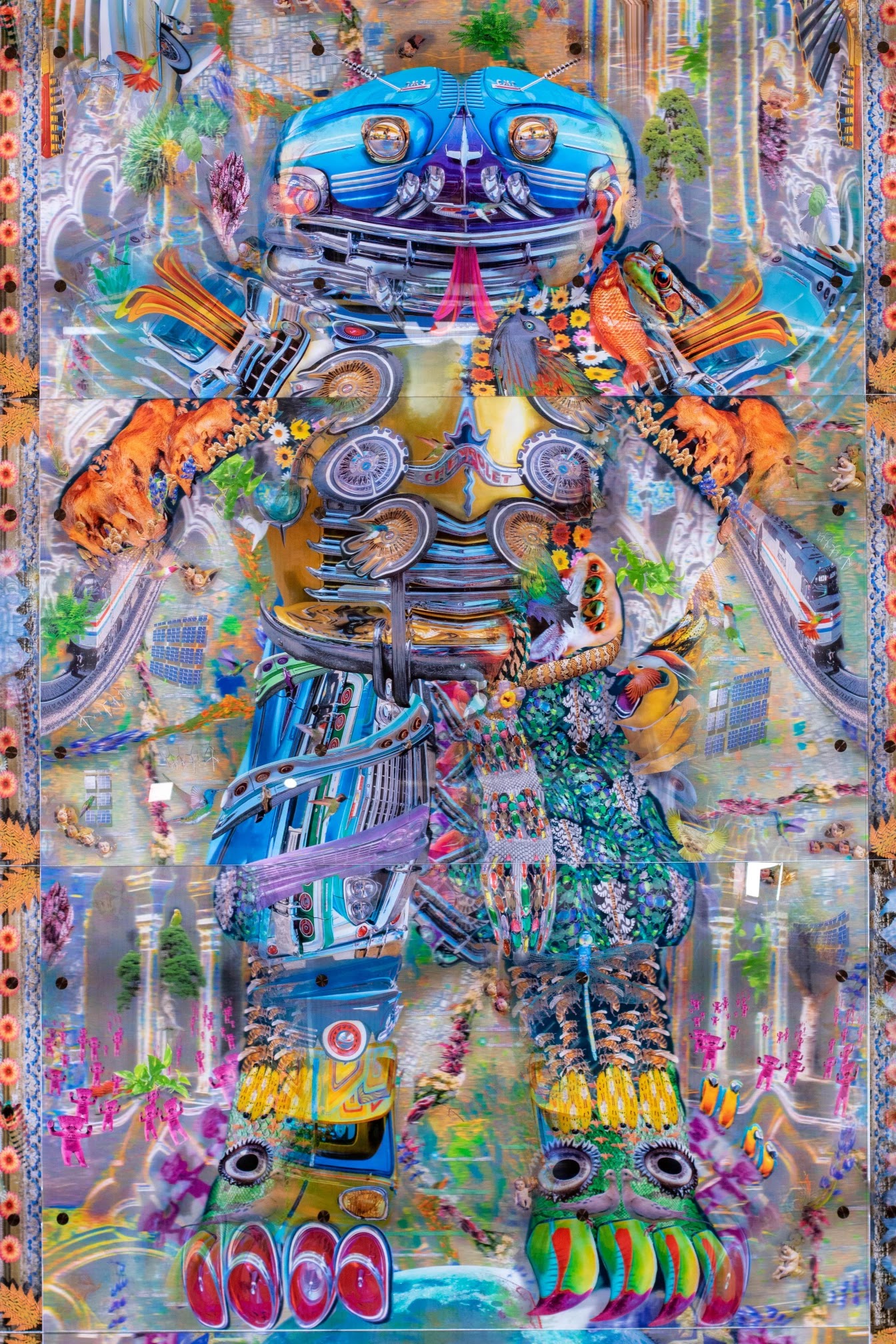De la Torre Brothers' Mural Installed at Cheech
 |
| Einar and James de la Torre, untitled mural for the Cheech, 2022 |
The Cheech Marin Center for Chicano Art & Culture has installed a 26-ft-high, LED-backlit lenticular mural by brothers Einar and James de la Torre. It will be, it's safe to assume, one of the first things visitors notice.
A lenticular image creates a 3D, motion, or transformation effect as the viewer walks by it. The de la Torre mural represents an Aztec goddess collaged from natural and technological elements. The image contains numerous Easter eggs, including cherubs with Cheech Marin's features.
Andy Warhol pioneered lenticular images in art with a project sponsored by LACMA's Art & Technology program. After seeing Bruce Nauman's holograms, Warhol used what was then cutting-edge technology to create a lenticular mural of 3D daisies behind a curtain of water created by a "rain machine" (itself a precursor of Random International's Rain Room). The Warhol installation appeared at Osaka's Expo 70 and at LACMA in 1971.
 |
| Andy Warhol, Daisy, about 1971. Lenticular print |
 |
| Damien Hirst, For the Love of God (lenticular print), 2012 |
 |
| Mentalgassi, Making the Invisible Visible (Troy Davis), 2010 |
Since then a handful of prominent artists have created lenticular prints, often leaning into the medium's lowbrow reputation. Street artists implement a low-tech version of the concept to create dissolving images on urban fences.
The Cheech will open June 18, 2022 with a de la Torre Brothers retrospective curated by Selene Preciado.
 |
| de la Torre mural as installed at the Cheech Marin Center, Riverside. Photo by Paula Kiley |
Comments
Doesn't anybody care about artists' media?
Are we talking fresco?
Spray paint on metal?
"Baked" enamels?
Acrylic on canvas?
None of the above?
Are these issues incidental? Honestly!